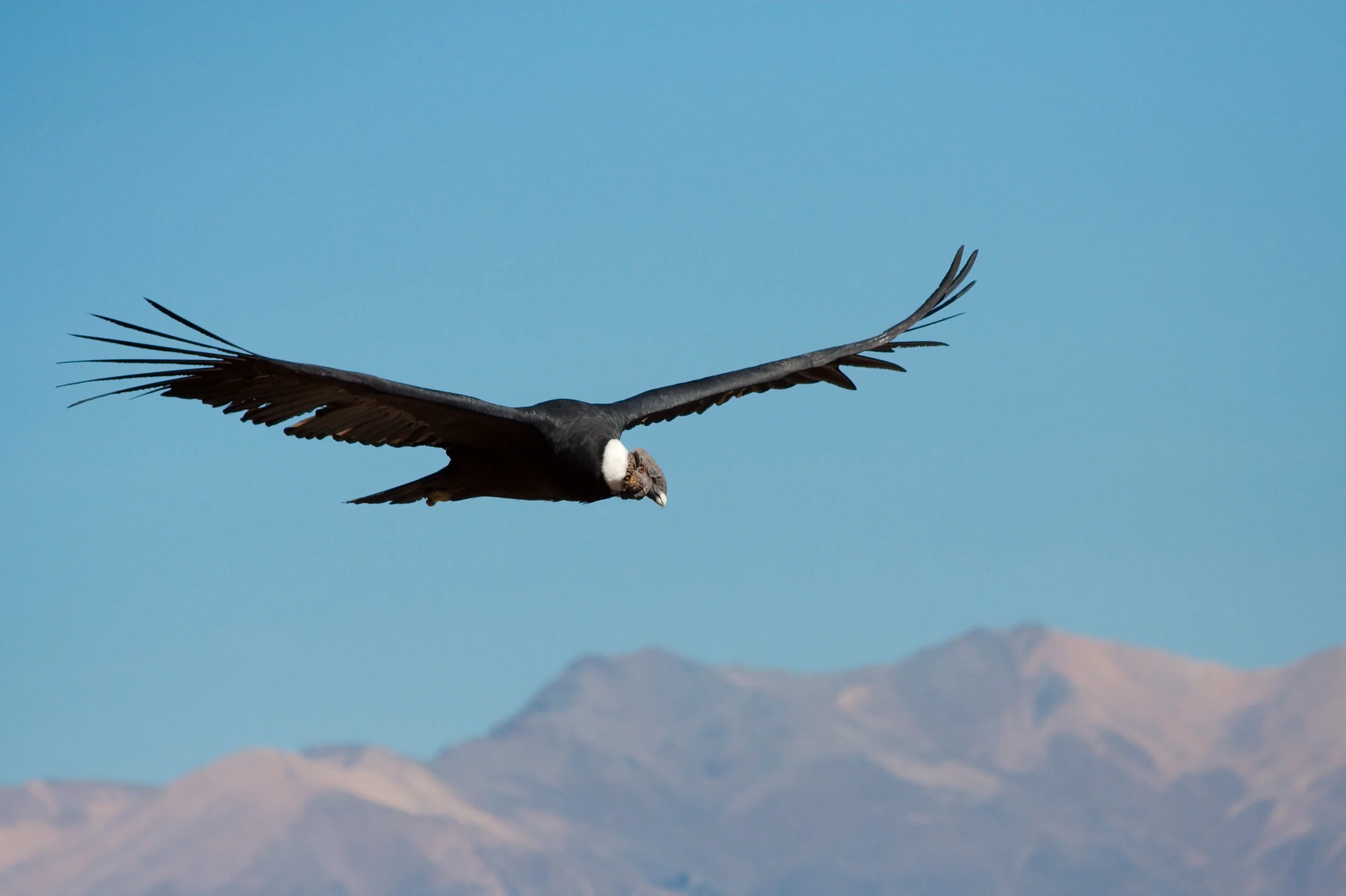California Condor
"Living Large in Cali" by Jonathan Kuo (digital)
“Always fascinated by the size and majesty of the condor and wanted to capture that in my studies.”
Your purchase is helping Expedition Art and Saving Species purchase land in Sumatra! Learn more about the project.
Habitat
California condors live in rocky, forested regions including canyons, gorges and mountains. They range throughout the western United States from Canada to Mexico, with some populations as far east as Florida and New York. California condors most often nest in caves or crevices in rock faces, but are also known to nest in tree cavities.
Family Life
Although they pair off during breeding season, California condors are highly social at roosting, bathing and feeding sites, and individuals even recognize one another. Pairs are monogamous. They share nesting duties nearly equally, stay together throughout the year and usually endure until one dies. Instead of having many young and gambling that a few will survive, condors produce very few young and provide an extensive amount of parental care.
Lifespan
The California Condor can live for 45-80 years depending on the quality of their conditions.
Hunting Habits/Diet
Condors feed off of dead animal carcasses. The birds prefer those of large dead animals like deer, cattle and sheep. However, they are also known to eat smaller animals like rodents and rabbits. Condors can soar to heights of 15,000 feet and may travel up to 150 miles a day in search of their next meal. They do not have a good sense of smell, so they find their food mostly by their keen eyesight. In captivity, condors consume five to seven percent of their body mass per day to maintain their weight, but because an enlarged part of their esophagus can hold three pounds of food, they may only have to eat every two to three days. Young are fed by regurgitation.
Population
There are about 400 California condors in the world, about 237 of which are free-flying in California, Arizona and Mexico.
Fun Fact
The skin of the condor’s head and neck are capable of changing noticeably in response to an emotional state, like a mood ring. The California condor is one of our nation’s most magnificent birds, with wings spanning an amazing nine and half feet. Pairs mate for life.
Why are they endangered?
Human activity poses the greatest threat to condors. Due to their massive wingspan of nearly 10 feet, condors can close the circuit of high voltage power lines, electrocuting themselves in the process. Condors have been known to accidentally drink poison like antifreeze. Lead poisoning has become a primary threat to the species. Hunters shoot animals with lead bullets and when the condors eat the carcasses, they also eat the lead and eventually die after blood levels reach a lethal level.
Status
Critically Endangered


